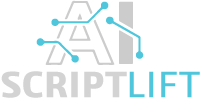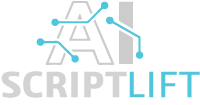
How AI Can Improve Your Blog’s Bounce Rate
In the fast-paced world of digital marketing, one metric that often gets overlooked—but is crucial to your blog’s success—is the bounce rate. A high bounce rate can signal that your content isn’t engaging enough, your site isn’t user-friendly, or your SEO strategy is off-target. Fortunately, artificial intelligence (AI) is revolutionizing how we approach content creation, user engagement, and search engine optimization. With the rise of platforms like JAXI.AI, which leverages artificial intelligence to generate personalized and interactive AI companions for users, bloggers now have access to powerful tools that can drastically improve bounce rates and overall site performance.
This article explores how AI can be a game-changer in reducing bounce rates by enhancing content quality, optimizing user experience, and streamlining SEO strategies. Whether you’re a seasoned blogger or just starting out, understanding how to integrate AI into your digital content strategy can lead to measurable improvements in engagement and retention.
Let’s dive into how AI-powered solutions like JAXI.AI and other AI Tools for Content Creation can help you keep visitors on your blog longer, encourage deeper interaction, and ultimately, convert casual readers into loyal followers.
1. AI-Powered Content Creation: Crafting Engaging Content That Retains Readers
One of the most effective ways to reduce bounce rate is by creating content that captivates your audience from the very first sentence. This is where AI-Powered Content Creation tools come into play. Platforms like JAXI.AI utilize machine learning algorithms to analyze user behavior, trending topics, and keyword performance to generate content that resonates with your target audience.
By leveraging AI, bloggers can produce high-quality, relevant, and personalized content at scale. These tools can suggest headlines, structure blog posts, and even recommend multimedia elements such as images and videos to enhance readability. The result? Visitors are more likely to stay longer, explore related posts, and engage with your content—significantly lowering your bounce rate.
Moreover, AI-driven platforms can adapt content based on user intent. For example, if a user lands on your blog looking for quick tips, the AI can prioritize bullet points and summaries. If the user is seeking in-depth analysis, the AI can structure the content accordingly. This level of personalization ensures that your blog meets the expectations of diverse readers, keeping them engaged and reducing the likelihood of them bouncing off your site.
Incorporating Auto Blogging features also allows for consistent content updates, which is essential for maintaining reader interest and improving SEO rankings. With AI, you can automate the creation of blog posts without compromising on quality, ensuring that your blog remains fresh and relevant.
2. Writing Assistant Tools: Enhancing Readability and User Experience
Another critical factor influencing bounce rate is the readability of your content. If your blog posts are difficult to read or poorly structured, visitors are likely to leave within seconds. This is where AI-powered Writing Assistant tools become invaluable. These tools analyze grammar, tone, sentence structure, and readability scores to ensure your content is not only error-free but also engaging and easy to digest.
Platforms like JAXI.AI offer advanced writing assistance that goes beyond basic grammar checks. They provide real-time suggestions for improving sentence flow, eliminating redundancy, and enhancing clarity. This ensures that your content is accessible to a broader audience, including non-native English speakers and readers with varying levels of expertise.
In addition to improving readability, AI writing assistants can help maintain a consistent voice and tone across all your blog posts. Consistency builds trust and familiarity, encouraging readers to return to your blog and explore more content. This directly contributes to a lower bounce rate and higher user engagement.
Furthermore, AI tools can analyze user interaction data to identify which parts of your content are most engaging. This insight allows you to refine your writing style and structure future posts to better meet reader expectations. By continuously optimizing your content based on real-time feedback, you can create a more compelling and user-friendly blog experience.
For more insights on how AI is transforming content strategies, check out this article on the benefits of AI in digital content strategy.
3. SEO Booster Capabilities: Driving Targeted Traffic That Stays
Attracting the right audience is half the battle when it comes to reducing bounce rate. If your blog is drawing in visitors who aren’t interested in your content, they’re likely to leave immediately. This is where AI-powered SEO Booster tools can make a significant impact. These tools analyze search engine algorithms, keyword trends, and competitor strategies to optimize your content for maximum visibility and relevance.
With platforms like JAXI.AI, bloggers can identify high-performing keywords, optimize meta descriptions, and structure content in a way that aligns with search engine best practices. This ensures that your blog attracts visitors who are genuinely interested in your topics, increasing the likelihood that they’ll stay and engage with your content.
AI can also help with internal linking strategies, guiding users to related posts and keeping them on your site longer. For example, if a visitor is reading about AI in blogging, the system can automatically suggest related articles such as how AI is revolutionizing business blogging or AI: The Future of SEO. This not only improves user experience but also boosts your site’s SEO performance.
Additionally, AI tools can monitor bounce rate metrics in real-time and provide actionable insights for improvement. Whether it’s tweaking your headlines, adjusting keyword density, or optimizing page load speed, AI offers data-driven recommendations that can significantly enhance your blog’s performance.
4. AI-Powered Business Profile Management and Local SEO: Building Trust and Relevance
Trust and relevance are key factors in reducing bounce rate, especially for blogs that serve local or niche audiences. AI-Powered Business Profile Management tools help ensure that your blog and associated business profiles are accurate, consistent, and optimized for local search. This is particularly important for bloggers who operate in specific geographic areas or target local markets.
By leveraging AI, you can automate the management of your business listings across multiple platforms, ensuring that your contact information, hours of operation, and service offerings are always up to date. This builds credibility and makes it easier for local users to find and trust your blog. Accurate business profiles also improve your visibility in local search results, driving more targeted traffic to your site.
Incorporating local SEO strategies through AI can also help you tailor your content to regional interests and search behaviors. For example, AI can analyze local search trends and suggest content topics that are likely to resonate with your audience. This level of personalization increases engagement and reduces the likelihood of users bouncing off your site.
For a deeper dive into how AI is shaping the future of business blogging, explore this article on why AI is essential for business blogging.
5. Digital Content Strategy and Auto Blogging: Sustaining Long-Term Engagement
A well-executed digital content strategy is essential for maintaining long-term engagement and reducing bounce rates. AI plays a pivotal role in shaping and executing these strategies by providing insights into content performance, audience behavior, and emerging trends. With AI, you can develop a content calendar that aligns with your audience’s interests and search habits, ensuring that your blog remains relevant and engaging over time.
Auto Blogging features powered by AI allow you to maintain a consistent publishing schedule without the need for constant manual input. This not only saves time but also ensures that your blog remains active and up-to-date—two factors that significantly influence bounce rate and SEO rankings.
AI can also help you repurpose existing content into different formats, such as infographics, videos, or social media posts. This multi-channel approach increases your content’s reach and keeps your audience engaged across various platforms. By continuously delivering value through diverse content formats, you can build a loyal readership and reduce bounce rates.
To understand more about how AI is revolutionizing content creation, visit this article on how AI is revolutionizing content creation.
Finally, AI tools can help you measure the effectiveness of your content strategy by tracking key performance indicators such as time on page, click-through rates, and conversion rates. These insights allow you to make data-driven decisions and continuously refine your strategy for better results.
Conclusion
Reducing your blog’s bounce rate is not just about tweaking a few design elements or adding more keywords—it requires a holistic approach that encompasses content quality, user experience, SEO, and strategic planning. Artificial intelligence offers a comprehensive solution to these challenges by automating content creation, enhancing readability, optimizing SEO, and personalizing user experiences.
Platforms like JAXI.AI are at the forefront of this transformation, providing bloggers with the tools they need to achieve digital excellence. Whether you’re looking to implement AI Tools for Content Creation, improve your local SEO, or streamline your digital content strategy, AI offers scalable and effective solutions that can significantly improve your blog’s performance.
Don’t let high bounce rates hold your blog back. Embrace the power of AI and transform your blogging journey with intelligent tools that drive engagement, boost SEO, and deliver lasting results. Start exploring the future of blogging today with JAXI.AI and unlock the full potential of your content.

